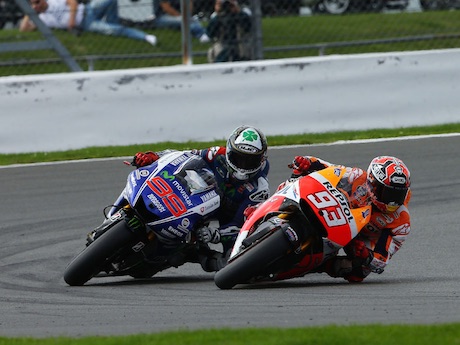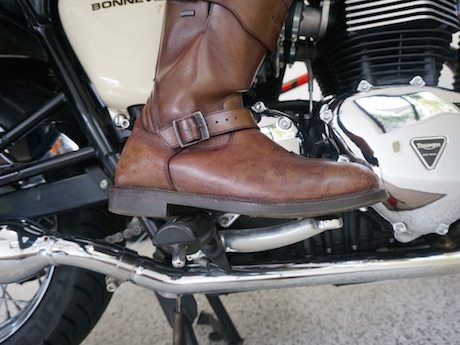Where you should place your feet on the footpegs has long been a subject of debate among riders.
If you want to race, go ahead and put the balls of your feet on the footpegs, but if you want to ride in the real world, the arches of your feet go on the footpegs.
I spoke recently to a bike cop and he named this as one of the biggest failings of riders.
If you have the balls of your feet on the footpegs, it gives you a bit more push on the pegs which helps steer and control the bike.
No doubt about it.
However, your feet are not anywhere near the brake or gear shifter and, in an emergency, you waste valuable milliseconds reaching out for those levers.

On a racetrack, you know where the corners are, you know there is no approaching traffic or livestock wandering across the road and you even know where the braking markers are for the corners.
So you can afford to put the balls of your feet on the pegs to turn and control the bike, knowing exactly when to move your feet forward to shift gears or hit the brakes.
But in the real world you don’t know when those emergencies will arise.
Instead, we need to ride for the unexpected and unfortunately there are unexpected things everywhere. Livestock, gravel on the road, cars on the wrong side of the road, speed cameras!

That means we need our feet close to the brake and gear shift, so you’ll need to have the arches of your feet on the pegs.
If you claim that having the arches of your feet on the pegs actually makes it more difficult to reach the brake and shifter then you have another problem entirely – you have not set the pedals at the right position.
Make sure that the pedals are set at a position so you don’t have to move your feet far to reach them.
Apart from the track, there is only one other time when you need the balls of your feet on the pegs and that is when you are riding off-road, particular through ruts as you don’t want your toes sticking out and getting caught on an obstacle.
Other than that, keep the arches of your feet on the pegs.
Do you agree, or disagree? Leave your comments in the box below.


